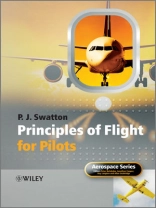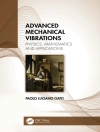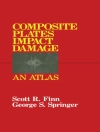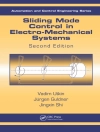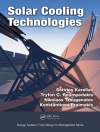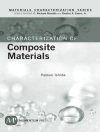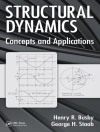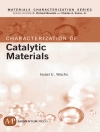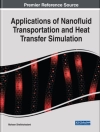Organised and written as an accessible study guide for student pilots wishing to take commercial ground examinations to obtain ATPL or CPL licenses,
Principles of Flight for Pilots also provides a reliable up-to-date reference for qualified and experienced personnel wishing to further improve their understanding of the Principles of Flight and related subjects. Providing a unique aerodynamics reference tool, unlike any book previously
Principles of Flight for Pilots explains in significant depth all the topics necessary to pass the Principles of Flight examination as required by the EASA syllabus.
Aviation ground instructor Peter J. Swatton, well reputed for his previous works in the field of pilot ground training, presents the subject in seven parts including basic aerodynamics; level flight aerodynamics; stability; manoeuvre aerodynamics; and other aerodynamic considerations. Each chapter includes self-assessed questions, 848 in total spread over eighteen chapters, with solutions provided at the end of the book containing full calculations and explanations.
สารบัญ
Series Preface xxi
Preface xxiii
Acknowledgements xxv
List of Abbreviations xxvii
Weight and Mass xxxi
Part 1 The Preliminaries 1
1 Basic Principles 3
1.1 The Atmosphere 3
1.2 The Composition of Air 3
1.2.1 The Measurement of Temperature 3
1.2.2 Air Density 4
1.3 The International Standard Atmosphere 4
1.3.1 ISA Deviation 5
1.3.2 JSA Deviation 5
1.3.3 Height and Altitude 6
1.3.4 Pressure Altitude 7
1.3.5 Density Altitude 7
1.4 The Physical Properties of Air 7
1.4.1 Fluid Pressure 7
1.4.2 Static Pressure 7
1.4.3 Dynamic Pressure 7
1.5 Newton’s Laws of Motion 8
1.5.1 Definitions 8
1.5.2 First Law 8
1.5.3 Second Law 8
1.5.4 Third Law 9
1.6 Constant-Acceleration Formulae 9
1.7 The Equation of Impulse 9
1.8 The Basic Gas Laws 10
1.8.1 Boyles Law 10
1.8.2 Charles’ Law 10
1.8.3 Pressure Law 10
1.8.4 The Ideal Gas Equation 10
1.9 The Conservation Laws 11
1.10 Bernoulli’s Theorem 11
1.10.1 Viscosity 11
1.11 The Equation of Continuity 12
1.12 Reynolds Number 12
1.12.1 Critical Reynolds Number (Recrit) 13
1.13 Units of Measurement 13
Self-Assessment Exercise 1 15
2 Basic Aerodynamic Definitions 19
2.1 Aerofoil Profile 19
2.2 Aerofoil Attitude 20
2.3 Wing Shape 21
2.4 Wing Loading 23
2.5 Weight and Mass 24
2.5.1 The Newton 24
2.6 Airspeeds 24
2.6.1 Airspeed Indicator Reading (ASIR) 24
2.6.2 Indicated Airspeed (IAS) 25
2.6.3 Calibrated Airspeed (CAS) 25
2.6.4 Rectified Airspeed (RAS) 25
2.6.5 Equivalent Airspeed (EAS) 25
2.6.6 True Airspeed (TAS) 25
2.6.7 Mach Number 26
2.7 Speed Summary 26
2.8 The Effect of Altitude on Airspeeds 27
2.8.1 a. Below the Tropopause 27
2.8.2 b. Above the Tropopause 27
Self-Assessment Exercise 2 29
Part 2 Basic Aerodynamics 33
3 Basic Control 35
3.1 Aeroplane Axes and Planes of Rotation 35
3.1.1 The Longitudinal or Roll Axis 35
3.1.2 The Lateral or Pitch Axis 35
3.1.3 The Normal or Yaw Axis 35
3.2 The Flight Controls 35
3.3 The Elevators 37
3.4 Pitch Control 37
3.4.1 Control Surface Area 38
3.4.1.1 Control Surface Angular Deflection 38
3.4.2 The Moment Arm 38
3.4.3 Angle of Attack 38
3.5 Alternative Pitch Controls 39
3.5.1 Variable Incidence Tailplane 39
3.5.2 The Stabilator 40
3.5.3 The Elevons 40
3.6 The Rudder 40
3.7 Yaw Control 41
3.7.1 Control-Surface Area 41
3.7.1.1 Control-Surface Deflection 41
3.7.2 The Moment Arm 41
3.7.2.1 Engine-Induced Yaw 41
3.8 Asymmetric Engine Yawing Moment 42
3.8.1 Critical Power Unit 42
3.9 Asymmetric Rolling Moment 43
3.10 Minimum Control Speeds 44
3.10.0.1 For Take-off 44
3.10.0.2 For Landing 44
3.10.1 VMC 44
3.10.2 VMCG 44
3.10.2.1 The Effect of the Variables on VMCG and VMC 45
3.10.3 VMCL 45
3.10.4 VMCL(1out) 45
3.10.5 VMCL-2 46
3.10.5.1 The Effect of the Variables on VMCL 46
3.11 The Ailerons 46
3.12 Roll Control 46
3.12.1 The Flaperon 47
3.13 Wing Twist 47
3.14 Geometric Twist 47
3.15 Aerodynamic Twist 47
3.15.1 Twisterons 48
3.16 High-Speed Twist 49
3.16.1 Low-Speed Ailerons 49
3.16.2 High-Speed Ailerons 49
3.16.3 Roll Spoilers 50
Self-Assessment Exercise 3 51
4 Lift Generation 55
4.1 Turbulent Flow 55
4.2 Streamline Flow 55
4.3 The Boundary Layer 57
4.4 The Laminar Boundary Layer 58
4.4.1 The Transition Point 58
4.5 The Turbulent Boundary Layer 58
4.5.1 Leading-Edge Separation 59
4.6 Boundary-Layer Control 59
4.6.1 Blowing 59
4.6.2 Suction 60
4.6.3 Vortex Generators 60
4.7 Two-Dimensional Flow 61
4.8 The Stagnation Point 61
4.8.1 Aerofoil Upper-Surface Airflow 61
4.8.2 Aerofoil Lower-Surface Airflow 61
4.9 Lift Production 62
4.9.1 Symmetrical Aerofoils 62
4.9.2 Cambered Aerofoils 62
4.9.2.1 a. Negative Angles of Attack 64
4.9.2.2 b. Small Positive Angles of Attack 64
4.9.2.3 c. Large Positive Angles of Attack 64
4.10 The Centre of Pressure (CP) 64
4.11 Pitching Moments 65
4.12 The Aerodynamic Centre 67
4.13 Three-Dimensional Flow 68
4.14 Wing-Tip Vortices 68
4.15 Wake Turbulence 70
4.16 Spanwise Lift Distribution 70
4.16.1 The Effect of Wing Planform 70
Self-Assessment Exercise 4 75
Part 3 Level-Flight Aerodynamics 79
5 Lift Analysis 81
5.1 The Four Forces 81
5.2 Mass 81
5.3 Lift Analysis 82
5.4 The Factors Affecting CL 84
5.5 The Effect of Angle of Attack 84
5.6 The Effect of the Wing Shape 85
5.6.1 The Effect of Leading-Edge Radius 86
5.6.2 The Effect of Camber 86
5.6.3 The Effect of Aspect Ratio 87
5.6.4 The Wing Planform 88
5.6.4.1 The Effect of Sweepback 88
5.7 The Effect of Airframe-Surface Condition 89
5.8 The Effect of Reynolds Number 91
5.9 The Relationship between Speeds, Angles of Attack and CL 92
5.10 Aerofoil Profiles 93
5.10.1 High-Lift Aerofoils 93
5.10.2 General-Purpose Aerofoils 94
5.10.3 High-Speed Aerofoils 94
Self-Assessment Exercise 5 95
6 Lift Augmentation 99
6.1 Wing Loading 99
6.2 CLmax Augmentation 99
6.3 Slats 100
6.3.1 Automatic Slats 101
6.3.2 Manual Slats 103
6.4 Slots 103
6.5 Leading-Edge Flaps 103
6.5.1 The Krueger Flap 105
6.5.2 The Drooped Leading Edge 106
6.6 Trailing-Edge Flaps 106
6.6.1 The Plain Trailing-Edge Flap 107
6.6.2 The Split Trailing-Edge Flap 108
6.6.3 The Slotted Trailing-Edge Flap 108
6.6.4 The Fowler Flap 109
6.6.4.1 The Effect of Trailing-Edge Flaps 110
6.6.5 Leading- and Trailing-Edge Combinations 110
6.6.5.1 The Effect of Sweepback on Flap 112
Self-Assessment Exercise 6 113
7 Drag 119
7.1 Parasite (Profile) Drag 119
7.2 Surface-Friction Drag 120
7.2.0.1 Surface Area 120
7.2.0.2 Coefficient of Viscosity 120
7.2.0.3 Rate of Change of Airspeed 120
7.2.1 Flow Transition 120
7.2.1.1 Surface Condition 121
7.2.1.2 Speed and Size 121
7.2.1.3 Adverse Pressure Gradient 121
7.3 Form (Pressure) Drag 121
7.3.1 Interference Drag 122
7.4 Induced Drag 122
7.4.1 The Effect of Speed 123
7.4.2 The Effect of Mass 125
7.4.3 The Effect of Planform 125
7.4.4 The Effect of Sweepback 125
7.4.5 The Effect of Aspect Ratio 126
7.4.6 The Effect of Flap 126
7.4.7 The Effect of the CG Position 126
7.4.8 Effects Summary 127
7.5 Ground Effect 127
7.6 Wing-Tip Design 128
7.7 Wingspan Loading 129
7.8 The Coefficient of Induced Drag (CDI) 129
7.9 Total Drag 130
7.10 Analysis of the Total-Drag Curve 130
7.11 The Velocity of Minimum Drag (VIMD) 130
7.12 The Velocity of Minimum Power (VIMP) 132
7.13 The Maximum EAS/Drag Ratio (VI/Dmax) Speed 132
7.14 Speed Stability and Instability 133
7.15 The Effect of the Variables on Total Drag 134
7.15.1 The Effect of Altitude 134
7.15.2 The Effect of Mass 134
7.15.3 The Effect of Flap 134
7.16 The CL v CD Polar Diagram 136
7.17 Analysis of the Lift/Drag Ratio 137
7.17.1 The Effect of Flap 138
7.17.2 The Effect of Aspect Ratio 138
7.17.3 The Effect of Mass 139
7.18 Drag Augmentation 139
7.19 Airbrakes 139
7.20 Spoilers 139
7.20.1 Flight Spoilers 139
7.20.2 Ground Spoilers 140
7.20.3 Roll Spoilers 141
7.21 Barn-Door Flaps 142
7.22 Drag Parachutes 142
Self-Assessment Exercise 7 143
8 Stalling 153
8.0.1 The Stall 153
8.1 The Boundary Layer 153
8.2 Boundary-Layer Separation 154
8.2.1 Trailing-Edge Separation 154
8.2.2 Leading-Edge Separation 155
8.3 The Low-Speed Stalling Angle 156
8.4 Factors Affecting the Low-Speed Stalling Angle 156
8.4.1 Slat/Flap Setting 156
8.4.2 Ice Accretion 157
8.4.3 Effect on Take-off and Landing 158
8.4.3.1 Take-Off 158
8.4.3.2 Landing 158
8.4.3.3 Reduced Stalling Angle 159
8.4.3.4 Abnormal Stalling Characteristics 159
8.4.4 Heavy Rain 159
8.5 The Effect of Wing Design on the Low-Speed Stall 159
8.5.1 Swept Wings 160
8.5.2 Elliptical Wings 161
8.5.3 Rectangular Wings 161
8.5.4 Straight Tapered Wings 161
8.6 Spanwise-Flow Attenuation Devices 161
8.6.1 The Wing Fence 162
8.6.2 The Sawtooth Leading Edge 162
8.6.3 The Notched Leading Edge 162
8.6.4 Vortex Generators 162
8.7 Wing-Tip Stalling 164
8.7.1 The Effect of Flap 164
8.7.2 The Prevention of Wing-Tip Stalling 165
8.7.2.1 a. Washout 165
8.7.2.2 b. Root Spoiler 165
8.7.2.3 c. Changing Camber 165
8.7.2.4 d. Slats and Slots 165
8.7.2.5 e. Aspect Ratio 165
8.8 Stalling Characteristics 165
8.8.1 Ideal Stalling Characteristics 165
8.8.2 Swept-Wing Stalling Characteristics 166
8.9 Summary of Factors Affecting the Stalling Angle 166
8.10 Aerodynamic Stall Warning 166
8.11 Mechanical Stall Warning 167
8.11.1 The Flapper Switch 167
8.11.2 The Angle of Attack Sensor 167
8.11.3 Stick Shakers 168
8.11.4 Stick Pushers 168
8.12 Stalling Speed 168
8.13 Factors Affecting Stalling Speed 169
8.14 Centre of Gravity (CG) 169
8.14.1 Forward CG 169
8.14.1.1 Disadvantage 169
8.14.1.2 Advantage 169
8.14.2 Aft CG 169
8.14.2.1 Disadvantage 170
8.14.2.2 Advantage 170
8.15 Mass 170
8.16 Altitude 171
8.17 Configuration 171
8.18 Ice Accretion 171
8.19 Wing Planform 172
8.20 Summary of Factor Effects on Stalling Speed 172
8.21 The Speed Boundary 172
8.22 The Effect of a Gust on the Load Factor 173
8.23 Turn Stalling Speed 174
8.24 Stalling-Speed Definitions 174
8.24.1 VCLmax 175
8.24.2 VMS 175
8.24.3 VMS0 175
8.24.4 VMS1 175
8.24.5 VS 176
8.24.6 VS0 176
8.24.7 VS1 176
8.24.8 VS1g 176
8.24.9 VSR 176
8.24.10 VSR0 176
8.24.11 VSR1 176
8.25 The Deep Stall 177
8.26 The Accelerated Stall 177
8.27 The Power-On Stall 177
8.28 The Shock Stall 178
8.29 Stall Recovery 178
8.29.1 The Low-speed Stall 178
8.29.2 The Deep Stall 178
8.29.3 The Accelerated Stall 178
8.29.4 The Power-On Stall 179
8.29.5 The Shock Stall 179
8.30 The Spin 179
Self-Assessment Exercise 8 181
9 Thrust and Power in Level Flight 189
9.1 Thrust 189
9.2 Analysis of the Thrust Curves 189
9.2.1 Thrust Available 189
9.2.2 Thrust Required 190
9.2.2.1 Maximum Speed (EAS) 190
9.3 The Effect of the Variables on Thrust 191
9.3.1 Altitude 191
9.3.2 Mass 193
9.3.3 Asymmetric Flight 193
9.3.4 Centre of Gravity 195
9.4 Power 196
9.5 Analysis of the Power Curves 196
9.5.1 Maximum TAS 197
9.5.2 VMP and VMD 197
9.6 The Effect of the Variables on Power 198
9.6.1 Altitude 198
9.6.2 Mass 200
9.7 Summary 201
Self-Assessment Exercise 9 203
10 Advanced Control 207
10.1 Wing Torsion and Flexing 207
10.2 Wing Flutter 207
10.3 Torsional Flexural Flutter 207
10.4 Aileron Flutter 210
10.4.1 Torsional Aileron Flutter 210
10.4.2 Flexural Aileron Flutter 211
10.4.2.1 The Mass Balance 212
10.5 Divergence 213
10.6 Control Secondary Effects 213
10.7 Adverse Yaw 213
10.8 Counteraction Devices 214
10.8.1 Rudder/Aileron Coupling 214
10.8.2 Slot/Aileron Coupling 214
10.8.3 Spoiler/Aileron Coupling 214
10.8.4 Differential Aileron Deflection 214
10.8.5 Frise Ailerons 214
10.9 Control-Surface Operation 215
10.10 Aerodynamic Balance Methods 216
10.10.1 The Hinge Balance 216
10.10.2 The Horn Balance 216
10.10.3 The Internal Balance 217
10.10.4 The Balance Tab 217
10.10.5 The Antibalance Tab 218
10.10.6 The Spring Tab 218
10.10.7 The Servo Tab 220
10.11 Primary Control-Surface Trimming 221
10.11.1 Variable Trim Tabs 222
10.11.2 Fixed Trim Tabs 222
10.11.3 Stabilizer Trim Setting 222
10.12 Powered Controls 223
10.13 Power-Assisted Controls 223
10.14 Fully Powered Controls 223
10.14.1 Artificial Feel 224
10.14.1.1 The Simple System 224
10.14.1.2 The Servo-Assisted Hydraulic System 224
10.15 Fly-by-Wire 225
Self-Assessment Exercise 10 227
Part 4 Stability 231
11 Static Stability 233
11.1 Static Stability 233
11.2 The Effect of the Variables on Static Stability 235
11.3 Directional Static Stability 235
11.4 Yaw and Sideslip 235
11.5 The Directional Restoring Moment 235
11.5.1 Fin and Rudder Design 237
11.5.2 The Dorsal Fin 237
11.5.3 The Ventral Fin 237
11.5.4 The Moment Arm 237
11.6 Aeroplane Design Features Affecting Directional Static Stability 238
11.6.1 Fuselage 238
11.6.2 Wing 238
11.6.2.1 Dihedral 239
11.6.3 Sweepback 239
11.7 Propeller Slipstream 240
11.8 Neutral Directional Static Stability 240
11.9 Lateral Static Stability 240
11.10 Aeroplane Design Features Affecting Lateral Static Stability 242
11.10.1 Increased Lateral Static Stability 242
11.10.2 Decreased Lateral Static Stability 242
11.11 Sideslip Angle and Rolling Moment Coefficient 243
11.12 Analysis of Design Feature Effects 244
11.13 Wing Contribution 244
11.13.1 Dihedral 244
11.13.2 Anhedral 245
11.13.3 Sweepback 245
11.14 Wing/Fuselage Interference 246
11.14.1 Shielding Effect 246
11.14.2 Wing Location 246
11.15 Fuselage/Fin 246
11.15.1 Fin Size 246
11.15.2 Ventral Fin 246
11.16 Handling Considerations 247
11.16.1 Propeller Slipstream 247
11.16.2 Crosswind Landings 247
11.16.3 Flaps 247
11.17 Longitudinal Static Stability 248
11.18 The Centre of Pressure (CP) 249
11.19 The Neutral Point (NP) 250
11.19.1 Types of Static Neutral Point 250
11.19.1.1 The Stick-Free Static Neutral Point 250
11.19.1.2 The Stick-Fixed Static Neutral Point 250
11.19.2 The Effect of the CG at the NP 250
11.20 The Aerodynamic Centre (AC) 251
11.21 The Centre of Gravity (CG) 251
11.21.1 The CG Envelope 251
11.21.1.1 CG Envelope Limitations 251
11.21.1.2 CG Movement 252
11.21.2 The Effect of CG at the Limits 252
11.21.2.1 CG at the Forward Limit 252
11.21.2.2 CG at the Aft Limit 252
11.22 The Static Margin (SM) 253
11.23 The Trim Point (TP) 253
11.24 Longitudinal Dihedral 253
11.25 Aeroplane-Design Variations 255
11.26 The Effect of the Variables on Longitudinal Static Stability 255
11.26.1 Elevator Deflection 255
11.26.2 Trim 256
11.26.3 The Fuselage 257
11.26.4 Angle of Attack 257
11.26.5 Configuration 257
11.26.5.1 Trailing-Edge Flaps 257
11.26.5.2 Undercarriage 257
11.27 Stick-Fixed Longitudinal Static Stability 257
11.27.1 Stick-Position Stability 258
11.28 Stick-Free Longitudinal Static Stability 258
11.28.1 Stick Force 259
11.29 Certification Standard Stick-Force Requirements 260
11.29.1 a. Class ‘A’ Aeroplanes CS 25.173(c) 260
11.29.2 b. Class ‘B’ Aeroplanes CS 23.173(c) 260
11.30 The Effect of CG Position on Stick Force 260
11.31 Longitudinal Static Manoeuvre Stability 261
11.31.1 The Manoeuvre Point 261
11.32 Factors Affecting Stick Force 262
11.33 Summary 262
11.34 The Effect of Atmospheric Conditions 264
11.34.1 Ice Accretion 264
11.34.2 Heavy Rain 264
11.34.3 Altitude 264
11.35 The Factors Affecting Static Stability 264
Self-Assessment Exercise 11 267
12 Dynamic Stability 277
12.1 Longitudinal Dynamic Stability 279
12.1.1 The Phugoid 279
12.1.2 Short-Period Oscillation 280
12.1.3 Factors Affecting Longitudinal Dynamic Stability 280
12.2 Lateral Dynamic Stability 280
12.2.1 Sideslip 281
12.2.2 Rolling 281
12.2.3 Spiral 281
12.2.4 Dutch Roll 281
12.3 Spiral Instability 281
12.4 Dutch Roll 282
12.5 Asymmetric Thrust 282
12.6 Aerodynamic Damping 283
12.7 Summary 283
12.8 The Factors Affecting Dynamic Stability 283
12.8.1 a. General 283
12.8.2 b. Longitudinal 284
12.8.3 c. Lateral 284
Self-Assessment Exercise 12 285
Part 5 Manoeuvre Aerodynamics 289
13 Level-Flight Manoeuvres 291
13.1 The Manoeuvre Envelope 291
13.1.1 The Flight Load Factor 291
13.2 Manoeuvre-Envelope Limitations 291
13.2.1 The Stalling Speed 291
13.2.2 The ‘g’ Limitation 292
13.2.3 The Manoeuvre-Envelope Limiting Parameters 294
13.2.4 The Manoeuvre-Envelope Maximum-Speed Limitation 294
13.3 Stalling and Design Speed Definitions 294
13.4 Limiting Speeds 296
13.5 The Load Factor 296
13.6 The Gust Load Factor 297
13.7 Buffet 299
13.7.1 Low-Speed Buffet 299
13.7.2 High-Speed Buffet 300
13.8 The Buffet Onset Boundary Chart 300
13.9 Turns 302
13.9.1 The Load Factor in a Turn 303
13.9.2 The Turn Radius 303
13.9.3 Rate of Turn 305
13.10 Turn and Slip Indications 306
Self-Assessment Exercise 13 307
14 Climb and Descent Aerodynamics 315
14.1 Climbing Flight 315
14.2 The Forces in a Climb 315
14.3 The Effect of the Variables on the Climb 316
14.3.1 Altitude 316
14.3.2 Mass 316
14.3.3 Flap Setting 316
14.3.4 Wind Component 317
14.4 Climb Gradient 317
14.5 Climb-Gradient Calculations 318
14.5.1 Method 1 318
14.5.2 Method 2 320
14.6 Rate of Climb 321
14.7 Rate-of-Climb Calculations 321
14.8 VX and VY 323
14.9 VX 323
14.10 VY 325
14.11 Aircraft Ceiling 326
14.12 VY at the Absolute Ceiling 327
14.12.1 Piston/Propeller Aeroplanes 328
14.12.2 Jet Aeroplanes 328
14.13 The Effect of the Variables on VX and VY 329
14.13.1 Mass 329
14.13.2 Flap 329
14.13.3 Altitude 329
14.13.4 Temperature 329
14.13.5 Wind Component 329
14.14 The Effect of Climbing-Speed Variations 331
14.15 Factors Affecting the Climb 332
14.16 The Glide Descent 332
14.16.1 The Glide Variables 333
14.17 Gliding for Maximum Range 334
14.18 The Effect of the Variables on a Glide Descent 335
14.18.1 Speed 335
14.18.2 Wind Component 336
14.18.3 Mass 337
14.18.4 Angle of Attack 338
14.18.5 Flap 338
14.19 Gliding for Maximum Endurance 338
14.20 Climbing and Descending Turns 339
Self-Assessed Exercise 14 341
Part 6 Other Aerodynamic Considerations 349
15 High-Speed Flight 351
15.0.1 General Introduction 351
15.1 High-Speed Definitions 352
15.2 High-Speed Calculations 352
15.3 The Shockwave 353
15.3.1 Compressibility 353
15.3.2 Shockwave Formation 353
15.4 Air-Pressure-Wave Patterns 354
15.4.1 Subsonic 357
15.4.2 Sonic 357
15.4.3 Supersonic 357
15.5 The Shockwave Deflection Angle 357
15.6 The High-Speed CP 358
15.7 Critical Mach Number (MCRIT) 358
15.8 The Effect of a Shockwave 359
15.8.1 Wave Drag 359
15.8.2 Drag Divergence Mach Number 360
15.9 The Flying Controls 360
15.10 The Effect of the Aerofoil Profile 361
15.10.1 Thickness/Chord Ratio 362
15.10.2 Wing Camber 362
15.11 Swept Wings 362
15.12 The Effect of Sweepback 362
15.12.1 The Advantages of Sweepback 362
15.12.1.1 Increased MCRIT 363
15.12.1.2 Aerodynamic Effects 363
15.12.2 The Disadvantages of Sweepback 363
15.13 Remedial Design Features 364
15.13.1 Low-Speed Ailerons 365
15.13.2 High-Speed Ailerons 365
15.14 Area Rule 365
15.15 High-Speed-Flight Characteristics 367
15.15.1 High-Speed Buffet 367
15.15.2 Tuck Under 367
15.15.3 The Shock Stall 367
15.15.4 The Buffet Boundary 368
15.15.5 Coffin Corner 368
15.16 Speed Instability 368
15.16.1 The Mach Trimmer 369
15.16.2 Lateral Instability 369
15.17 The Supercritical Wing 369
15.18 Supersonic Airflow 370
15.18.1 The Convex Corner Mach Wave (Expansion Wave) 370
15.18.2 The Concave-Corner Shockwave 372
Self-Assessment Exercise 15 373
16 Propellers 387
16.1 Propeller Definitions 387
16.2 Basic Principles 389
16.3 Factors Affecting Propeller Efficiency 391
16.4 Airspeed 391
16.4.1 Fixed-Pitch Propellers 391
16.4.2 Variable-Pitch Propellers 393
16.5 Power Absorption 393
16.5.1 Propeller-Blade Shape 393
16.5.1.1 Blade Length 393
16.5.1.2 Blade Chord 394
16.5.2 Propeller-Blade Number 394
16.5.3 Solidity 394
16.6 The Effects of a Propeller on Aeroplane Performance 395
16.6.1 Torque 395
16.6.2 Slipstream Effect 396
16.6.3 Asymmetric Blade 396
16.6.4 Gyroscopic Effect 397
16.7 Propeller Forces and Moments 398
16.7.1 Centrifugal Force (CF) 398
16.7.2 Centrifugal Twisting Moment (CTM) 398
16.7.3 Aerodynamic Twisting Moment (ATM) 398
16.8 Propeller-Blade Positions 400
16.9 The Constant-Speed Unit (CSU) 400
16.9.1 Propeller Windmilling 401
16.9.2 Propeller Feathering 401
16.9.3 Reverse Pitch 403
16.10 The Effect of a Constant Speed Propeller on a Glide Descent 403
16.11 Engine Failure 403
Self-Assessment Exercise 16 405
17 Operational Considerations 411
17.1 Runway-Surface Contamination 411
17.1.1 Surface Contaminants 411
17.1.1.1 Standing Water 411
17.1.1.2 Slush 411
17.1.1.3 Wet Snow 411
17.1.1.4 Dry Snow 412
17.1.1.5 Very Dry Snow 412
17.1.1.6 Compacted Snow 412
17.1.1.7 Ice 412
17.1.1.8 Specially Prepared Winter Runway 412
17.1.1.9 Mixtures 412
17.1.1.10 Contaminant Drag 413
17.1.1.11 Water-Equivalent Depth 413
17.2 The Effect of Runway Contamination 413
17.2.1 Take-off 413
17.3 Aeroplane Contamination 415
17.3.1 The Effect of Heavy Rain 415
17.3.2 The Effect of Propeller Icing 415
17.3.3 The Effect of Airframe Icing 416
17.3.4 The Effect of Airframe-Surface Damage 416
17.3.5 The Effect of Turbulence 416
17.4 Windshear 417
17.4.1 The Effect of Windshear 417
17.4.1.1 Energy Loss 417
17.4.1.2 Energy Gain 417
17.4.2 Downdraught 418
17.4.2.1 Take-off 418
17.4.2.2 Landing 418
17.4.3 Countering Windshear 419
Self-Assessment Exercise 17 421
Part 7 Conclusion 425
18 Summary 427
18.1 Aerofoil-Profile Definitions 427
18.2 Aerofoil-Attitude Definitions 427
18.3 Wing-Shape Definitions 428
18.4 High-Speed Definitions 428
18.5 Propeller Definitions 429
18.6 V Speeds 430
18.7 Po F Formulae 432
18.7.1 Drag 433
18.7.2 Wing Loading/Load Factor 433
18.7.3 Stalling Speed Calculations 434
18.7.3.1 Mass Change 434
18.7.3.2 Load Factor 434
18.7.3.3 Turn 434
18.7.4 Design Manoeuvre Speed (VA) 434
18.7.5 Turn Details 434
18.7.5.1 Radius of Turn 434
18.7.5.2 Rate of Turn 434
18.7.6 Climb Calculations 434
18.7.7 Descent Calculations 434
18.7.7.1 Maximum Glide Range 435
18.7.8 Mach Angle (µ) Calculation 435
18.8 Key Facts 435
18.9 Stalling 435
18.9.1 The Maximum Coefficient of Lift (CLmax) 435
18.9.2 The Critical Angle 435
18.9.3 The Stalling Speed 436
18.10 Stability 436
18.10.1 Static Stability 436
18.10.2 Dynamic Stability 436
18.10.3 The Stick Force 438
18.10.4 The Gust Load Factor 439
18.11 Propellers 439
18.11.1 Propeller Efficiency 439
18.11.2 Fixed Pitch Angle of Attack 439
18.11.3 Propeller Gyroscopic Effect 440
18.12 The Effect of the Variables on Performance 440
18.12.1 Airframe Surface 440
18.12.2 Airframe Surface 440
18.12.3 Altitude 441
18.12.4 Aspect Ratio 441
18.12.5 Camber 441
18.12.6 CG Position 442
18.12.7 Flap 442
18.12.8 Sweepback 443
18.12.9 Dihedral 443
18.12.10 Mass 443
Self-Assessment Exercise 18 445
19 Solutions (with page references) 447
Self-Assessment Exercise 1 447
Self-Assessment Exercise 2 447
Self-Assessment Exercise 3 448
Self-Assessment Exercise 4 448
Self-Assessment Exercise 5 448
Self-Assessment Exercise 6 449
Self-Assessment Exercise 7 450
Self-Assessment Exercise 8 451
Self-Assessment Exercise 9 452
Self-Assessment Exercise 10 453
Self-Assessment Exercise 11 453
Self-Assessment Exercise 12 454
Self-Assessment Exercise 13 454
Self-Assessment Exercise 14 456
14.0.1 Vx &Vy Mathematical Proof 457
Self-Assessment Exercise 15 458
Self-Assessment Exercise 16 459
Self-Assessment Exercise 17 459
Self-Assessment Exercise 18 Turn Calculations 460
Index 461
เกี่ยวกับผู้แต่ง
Peter Swatton is Director and Chief Ground Instructor at Ground Training Services at Bournemouth/Hurn airport which specialises in training pilots for the JAA examinations. He was a navigator in the Royal Air Force for 37 years, of which 28 were spent as an OCU instructor and Wing examiner: on retirement he became an instructor with the Professional Pilot Study Centre at Bournemouth and remained there for 12 years before assuming his current role.
